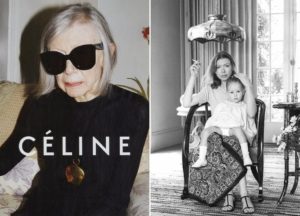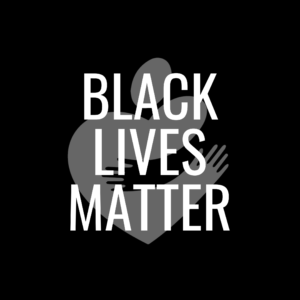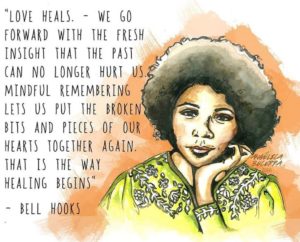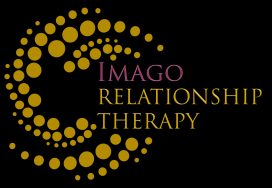This has been a difficult year.
Following the carnage we collectively experienced in 2020, from the health pandemic to a racial reckoning, many of us wanted to believe we could take a deep breath and turn our attention back to the mundanity of daily life.
Sadly, this has not been the case.
We have found ourselves in a strange landscape—navigating a world that has changed.
Friendships may have altered, truths may have shapeshifted, divisions deepened.
We may have been forced to simplify and streamline our lives, uproot ourselves from desolate workplaces, or the cataclysmic disorder of a marriage/relationship.
2021 packed the same unrelenting intensity as 2020 did. It has tested our patience, our integrity, our relationships and our ability to temper our desires.
We now have not one, but two hyperactive and new Covid-19 variants.
The divisions that have widened this year became exacerbated. Our version of the truth may not be true for somebody else. Marion Woodman writes, “there’s no sense talking about ‘being true to yourself’ until you are sure what voice you are being true to. It takes hard work to differentiate the voices of [our] unconscious.”
I managed to find refuge in the connecting spaces of my doctoral studies, my clinical practice, close friends, my love and commitment to my spouse and our marriage; watching movies, and in the things that bring me meaning, joy and the profound serenity that accompanies surrendering to the power of NOW.
Oh, aye, GRIEF.
Joan Didion writes, “Grief turns out to be a place none of us know until we reach it.” I watched the Netflix documentary about Joan Didion. I knew about her, but I didn’t know her work. Surprisingly, neither did Yael. I was heartened that she received the National Humanities Medal from President Obama who said, “I’m surprised she hasn’t already gotten this award by now.” Didion was relatively neglected during the canonization of “postmodern” literature.
 Joan Didion’s “moment” was declared in 2015 with the emergence of the Celine Ad campaign and fully overlaps with the “moment” of #BlackLivesMatter. These moments represent two different ways of occupying the public spaces of grief.
Joan Didion’s “moment” was declared in 2015 with the emergence of the Celine Ad campaign and fully overlaps with the “moment” of #BlackLivesMatter. These moments represent two different ways of occupying the public spaces of grief.
White women’s grief historically occupies a space of privilege in the public sphere, while people of color experience risk and harm in the public sphere, as we have seen in the recent deaths of often young, unarmed African Americans at the hands of police or in police custody. Within the moment created by these histories, Didion exemplifies the lyric survivor who suffers loss and pain, but is not required to assert the value of her husband and daughters’ lives and deaths or her right to grieve for them in the face of the denial of their worth. She suffered much—of that I must be clear—but her dead and her grief are accorded legitimacy and attention.
 BlackLivesMatter is an ideological and political intervention in a world where Black lives are systematically and intentionally targeted for demise. It is an affirmation of Black folks’ contributions to this society, our humanity, and our resilience in the face of deadly oppression
BlackLivesMatter is an ideological and political intervention in a world where Black lives are systematically and intentionally targeted for demise. It is an affirmation of Black folks’ contributions to this society, our humanity, and our resilience in the face of deadly oppression
Didion’s oversized sunglasses emblematize her access to white privacy—they are a visor behind which she can veil her gaze and deflect the gaze of others. The recent succession of black deaths enacts the spectacle of the disrespect for the lives and bodies of black families, for whom neither privacy nor access to public grieving is secure.
Acknowledging privacy’s unequal distribution propels us to ask new questions about the relationship between grief and racism in literary, political, cultural and even therapy spaces. How do Didion’s literary memoirs help us to materialize the histories of life and death for different publics that go into making a moment? What forms of knowledge does memoir, and certain critical engagements with it, enable us to develop about the subjects and spaces of public grief?
While watching the documentary, I felt empathy and enormous admiration for Joan Didion and her life’s work, however I could not help noticing my grief, anger and jealously for what appeared to be her privilege, ease, and even the luxury of growing old, having been given the opportunity to offer her gifts to the world. I was sad and envious of the dignity and grace, respect and attention afforded her as a grieving mother as I thought about the grief of the mothers of Emmett Till, Trayvon Martin, Tamir Rice, Michael Brown, Eric Garner, Freddie, Gray, Breonna Taylor, Sandra Bland, George Floyd Jr., and others whose names forge a chain, the recitation of which enacts grief as protest. I thought about the ways in which underneath these Black mothers’ grief is the ostinato of injustice, spectacle and senseless tragedy.
I do not want to feel this way. I don’t want to feel the scorching consciousness of racism—but I do.
Many of you know, my philosophy is rooted in embodied love and connecting. These feelings of anger and jealous triggered while watching the documentary are rooted in the effects of the pernicious poison of systemic racism, the lack of justice for unlawful killings, and the often public desecration of Black bodies. The comparison between Didion’s grief memoirs and a social justice movement forged in protest to racist killings and the failure to hold police accountable for them is hardly plain. It has to do with how the terrible repetition of successive deaths registers personal pain for the white family, who may invoke a zone of privacy in which to grieve and carry that privacy with them in public, as it exposes black families to the ongoing vulnerability of actual risk, extensive legal proceedings, and their unjust conclusions.
As we look back over a year hallmarked by uncompromising events that expanded surveillance, entrenched mandates, assembled godheads of science and technology, deepened divisions and ignited civil unrest, we may feel flatlined, weary, vaguely uneasy as to what the next twelve months will bring.
Yes, Love.
As bell hooks puts it …
 So, let’s soar above the triviality of daily routines and become explorers, adventurers, pilgrims, seeking signs, finding meaning and lessons in all of it.
So, let’s soar above the triviality of daily routines and become explorers, adventurers, pilgrims, seeking signs, finding meaning and lessons in all of it.
Let’s challenge our bodies and our minds as we reach for the dream, the impossible dream, lifted and struck by the faith that it will all work out in the end.
Let’s surrender to a portly Divine Creator/Intelligence, who so often evokes the kind of laughter that brings tears to our eyes and softens the rough edges of the world that, when we keep faith and when we look up, we notice the silver lining in the dark clouds of many circumstances.
Happy, Healthy, Peaceful, Safe New Year!





